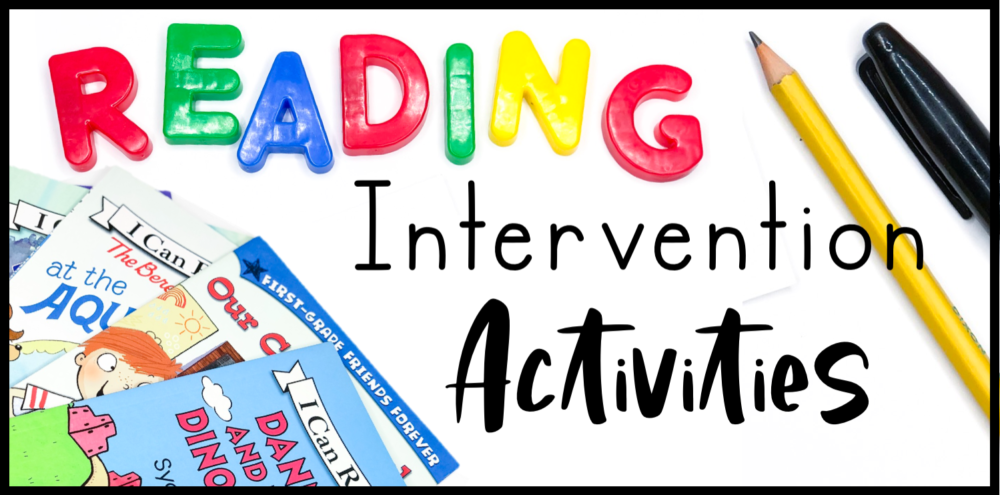7 Word Families Activities That Will Help Your Beginning Readers Soar
Use these 7 FUN word family activities to get your beginning readers to read fluently and confidently! Teaching word families is one of the best ways to build early reading fluency and help students’ reading soar.
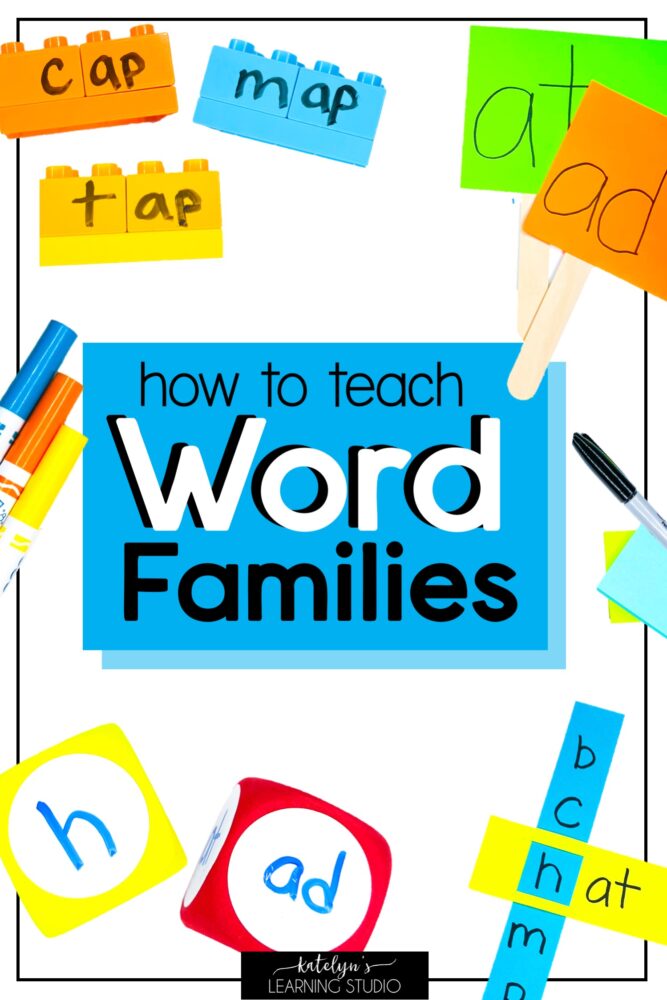
Teaching word families can be the magic switch your beginning readers need to start reading fluently! Use these word family activities to empower your students to be able to read words confidently and with ease.
Word families are one of my favorite things to teach.
Why?
Because of the look on those kiddos’ faces when they realize that once they learn one word, they can actually read a whole bunch of other words with the same ending!
I love seeing their confidence as they read lists of word families that all rhyme together.
It’s moments like those that really boost student confidence and give them reading momentum!
What are Word Families?
- Word families are groups of words that share a common pattern at the end, or have the same rime (word ending).
Usually, people refer to word families by their rime (ex: the -at family, the -an family, the -ap family, etc.)
You can create word families by simply switching out the initial sound in words and keeping the end of the word the same.
Word Family Examples:
Here are a few examples of word families.
- -am Word Family
- bam, cam, dam, fam, ham, jam, mam, Pam, ram, Sam, yam
- -ap Word Family
- cap, gap, lap, map, nap, rap, sap, tap, zap
- -et Word Family
- bet, get, jet, let, met, net, pet, set, vet, wet, yet
- -ig Word Family
- ig, dig, fig, gig, jig, pig, rig, wig
Be sure to check out my post all about the best activities to teach cvc words! I have a section in there that talks about using word families to teach cvc (consonant-vowel-consonant) words, and I show you how to use my CVC Practice Folders for some quick activities!
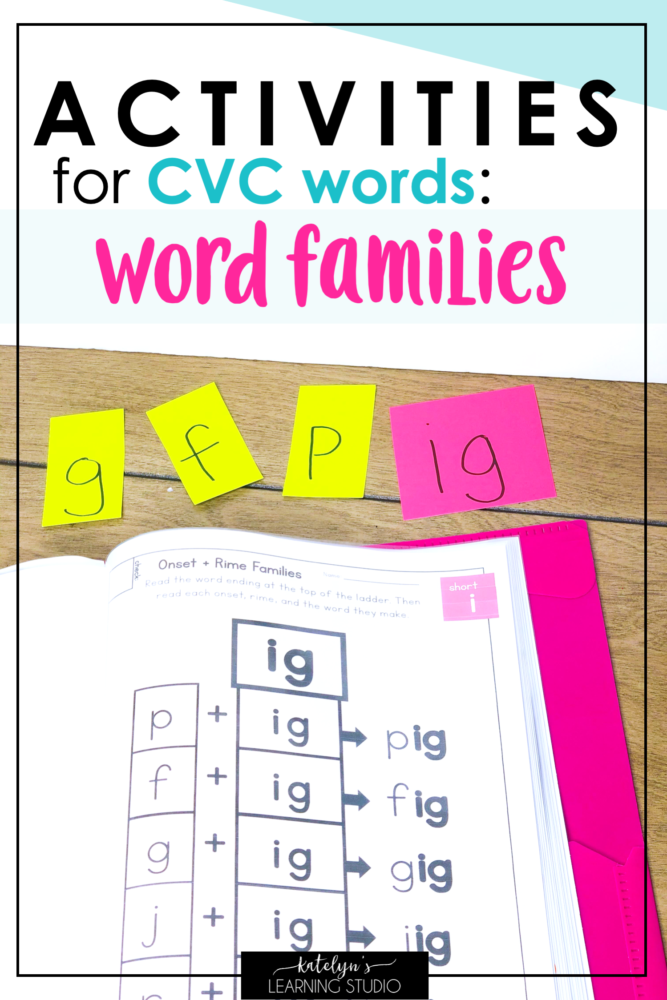
These word family worksheets in my CVC Practice Folders are a great way to build cvc word fluency.
3 Awesome Things about Word Families:
- Word families are like secret codes in the world of reading.
- Think of it as unlocking a whole set of words with just one key!
- Once you learn the word ending, you can switch out the beginning letters and read tons of new words!
- They help students grasp the connection between sounds and spelling. This makes the process of making words automatic through orthographic mapping so much easier!
- Word families all rhyme. Rhyming is one of the first essential phonemic awareness skills students need to develop. As we know from the Science of Reading, phonemic awareness is crucial to becoming a fluent reader. (Here is a post with a ton of easy + fun phonemic awareness activities!)
Now, let’s give your students that same joy and excitement as they learn how to use word families to read rhyming words confidently!
Here are 7 fun activities to practice reading word families that will empower your readers while helping them have to have fun while they learn.
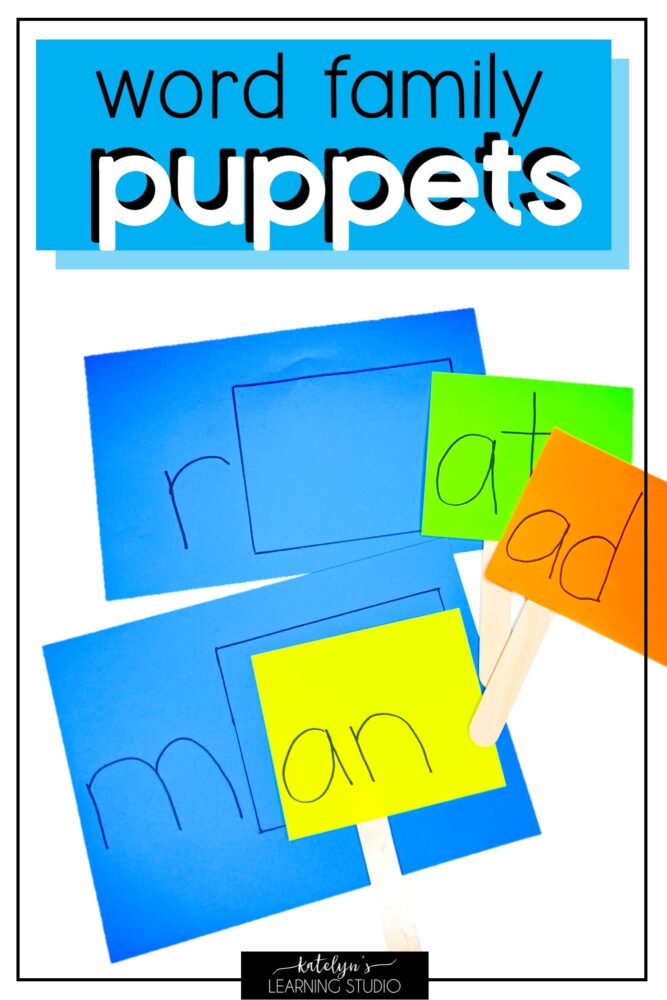
Word Families Activity #1: Word family puppets
This activity lets students practice word families in a hands-on way. It includes movement, tactile, and visual senses. Like I’ve mentioned before, multisensory learning that engages more than one sense at a time is the most effective! (Here’s another post with some super fun multisensory activity ideas!)
- Cut out squares of paper and write word endings on them.
- On a piece of paper, write a vertical list of beginning sounds.
- Optional: Trace the word ending square right next to each beginning sound so you make an empty box exactly the size of the word ending square (so it’s like a puzzle!).
- Tape the word ending squares onto a popsicle stick.
- Let students pick a word ending “puppet” and have them hold it up to each beginning sound.
- Have them read each word they make, then move the puppet down to the next sound to make a new word in that word family.
- Switch puppets and try it with a new word ending!
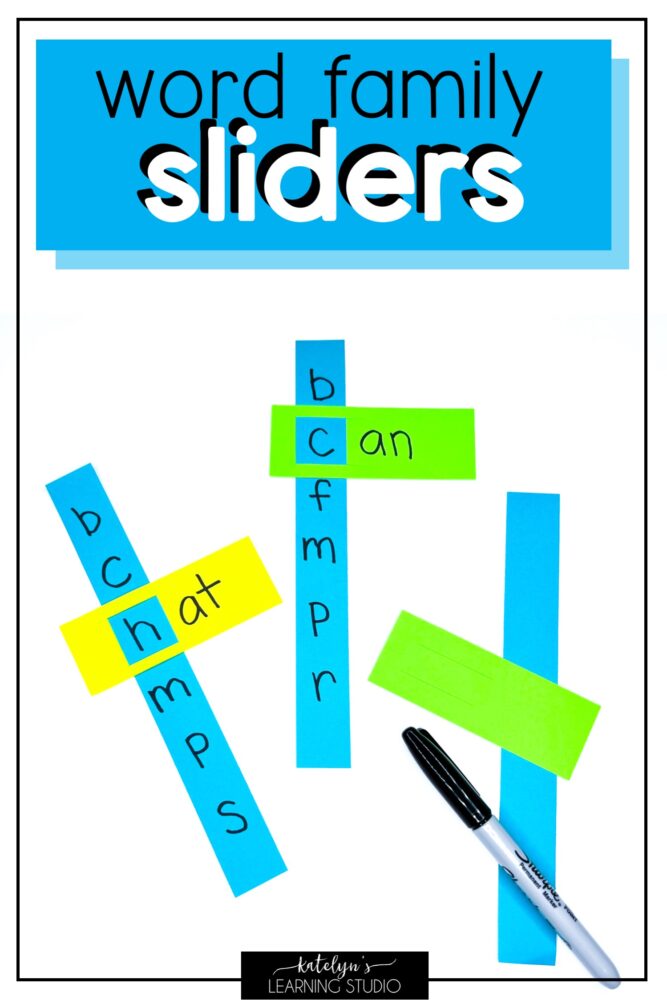
Word Families Activity #2: Word sliders
Make some fun word sliders for hands-on word families practice. The kids love sliding these up and down and creating new words!
- Cut 1 long strip of paper (1 inch by 8.5 inch)
- Cut several sorter “sliders” (1.5 inch by 4 inch)
- Cut slits near the top and bottom of the sliders (shorter pieces).
- Write beginning sound letters down the long strip.
- Write different word endings on each slider.
- Thread a slider onto the strip and read the words as you slide down!
- Change sliders to practice different word families, and make new long strips to practice new beginning sounds.
You can see a video of how to make these over on my Instagram page (the post with the colored paper)!
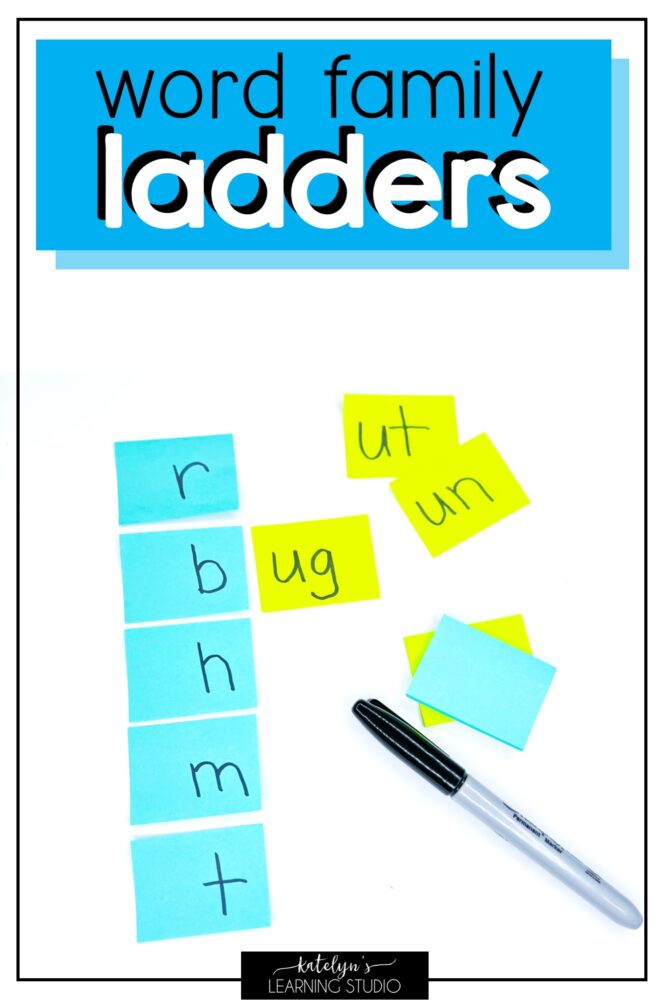
Word Families Activity #3: Sticky notes
Have I mentioned I love sticky notes? They are the perfect multi-purpose tool for any reading intervention classroom. Bright colors, moveable, and sticky fun! I show you two more ways you can use sticky notes in this post with 12 Easy & Fun Reading Activities: Quick Lessons for the Win!
You can use sticky notes to practice word families too.
- Make a column of sticky notes in a straight line on the table or board.
- Write 1 beginning sound on each of those sticky notes.
- Take 1 more sticky note and write a word ending on it.
- Let students take the word ending and stick it next to each beginning sound sticky note to make new words.
- They can move it down the whole column until they’ve made all of the words.
- Optional: change the word ending sticky note to a different word family ending!
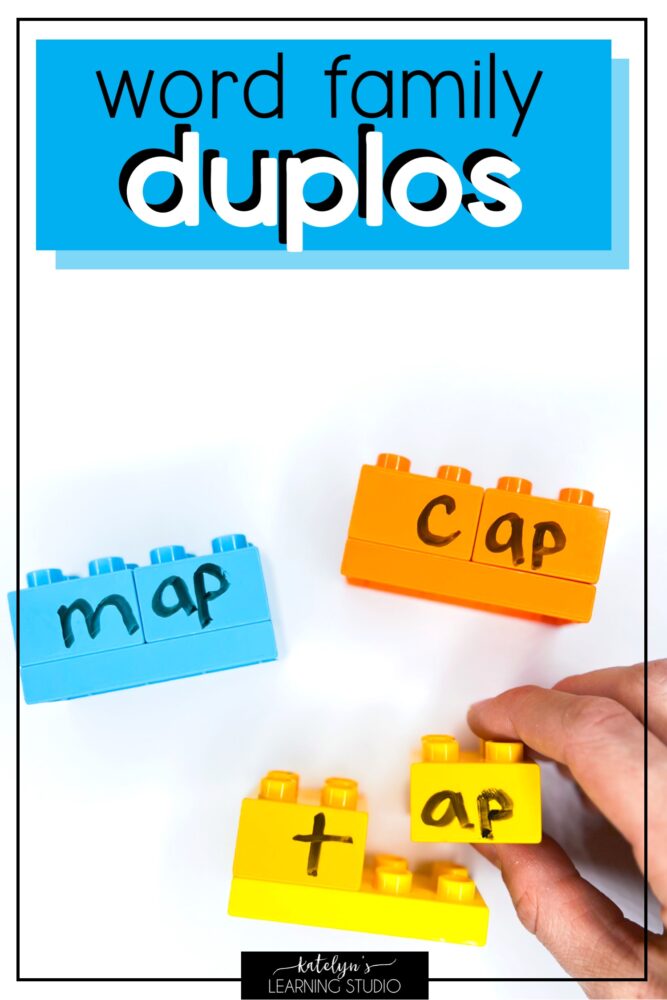
Word Families Activity #4: Duplos
Oh, this is such a fun way to practice word families! Building bricks are a high-interest toy that a lot of kids love, so that instantly drives up engagement. On top of that, they are a great visual demonstrating how words can be broken into onset and rime.
Use this activity to practice words that are all in the same word family.
- Use a longer 2 x 4 block for the base, and 2 smaller 2 x 2 blocks for the top.
- Use a dry erase marker to write a beginning sound on one of the smaller blocks and a word family ending on the other smaller block.
- Write the whole word put together on the larger block.
- Make several more “sets” like this of more words in that same word family (with the same word ending).
- Mix all of the pieces up in a pile and let students sort through the pile to make matching word sets.
- They can snap the beginning sound and the word ending onto the whole word, then read each block.
- When you’re finished, just wipe the marker off with a tissue or eraser.
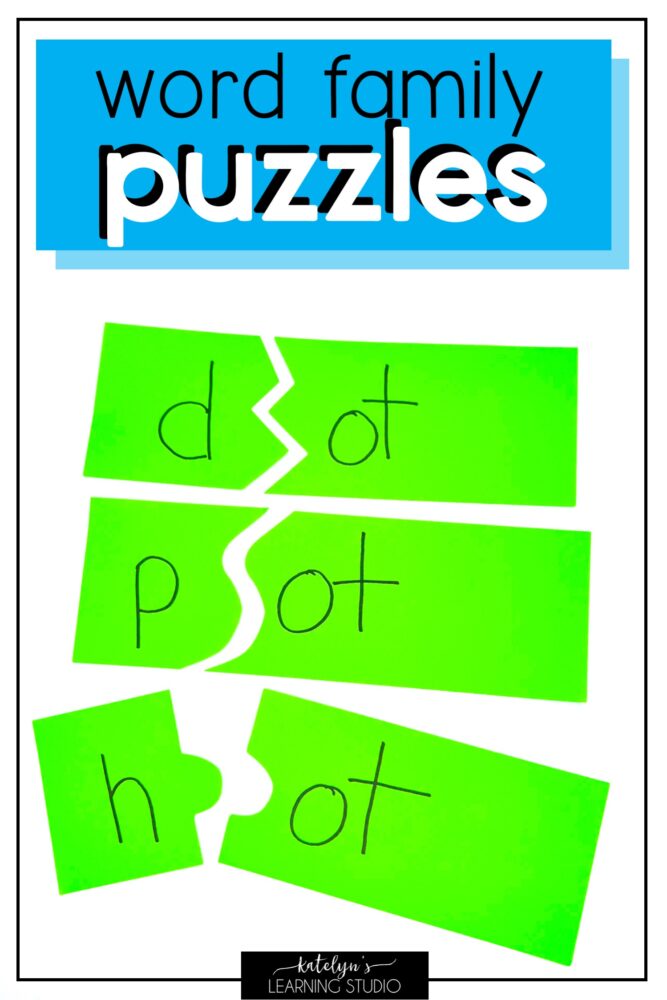
Word Families Activity #5: Word Puzzles
Puzzles are so satisfying to complete, and they’re a great way to practice word families too!
- Cut strips of paper.
- About ⅓ of the way into the strip, draw a “puzzle” like line to divide the onset and the rime part of your puzzle (zig-zag, curvy, puzzle piece, etc.).
- Write the beginning sound (onset) on the first part of your strip before the line.
- Write the word ending (rime) on the other part of your strip after the line.
- Make several different word strips, all with the same word endings but different puzzle lines.
- Cut the strips along the puzzle lines.
- Put all of the puzzle pieces in a pile and let students make matches and read the words.
For more puzzle activities, I have these rhyming word puzzles, and these math fact family puzzles!
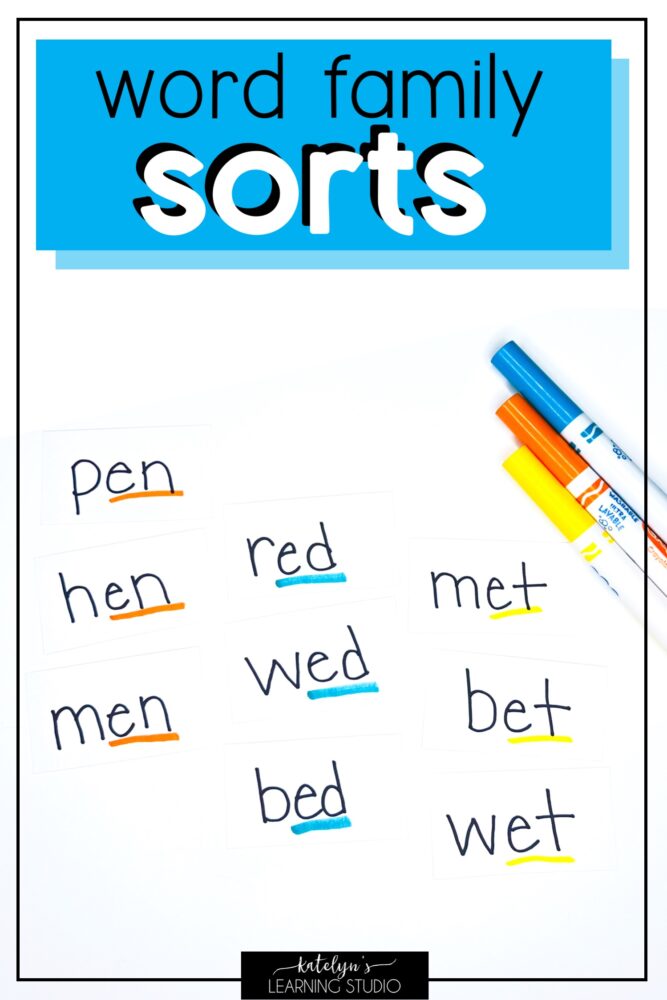
Word Families Activity #6: Word Highlight and Sort
As students get better at reading word families with the same ending, it’s a good idea to have them sort and discriminate words by their word family ending. This activity gets them reading words, identifying rimes (word endings), sorting into word familes, and finding rhyming words.
- Write words from 2 or 3 different word families on note cards.
- Set them in a pile and let students take a card.
- Have them highlight the word ending, then read the word.
- Let them sort the cards into groups that have the same word endings.
- When all cards are sorted, have them read each word family group.
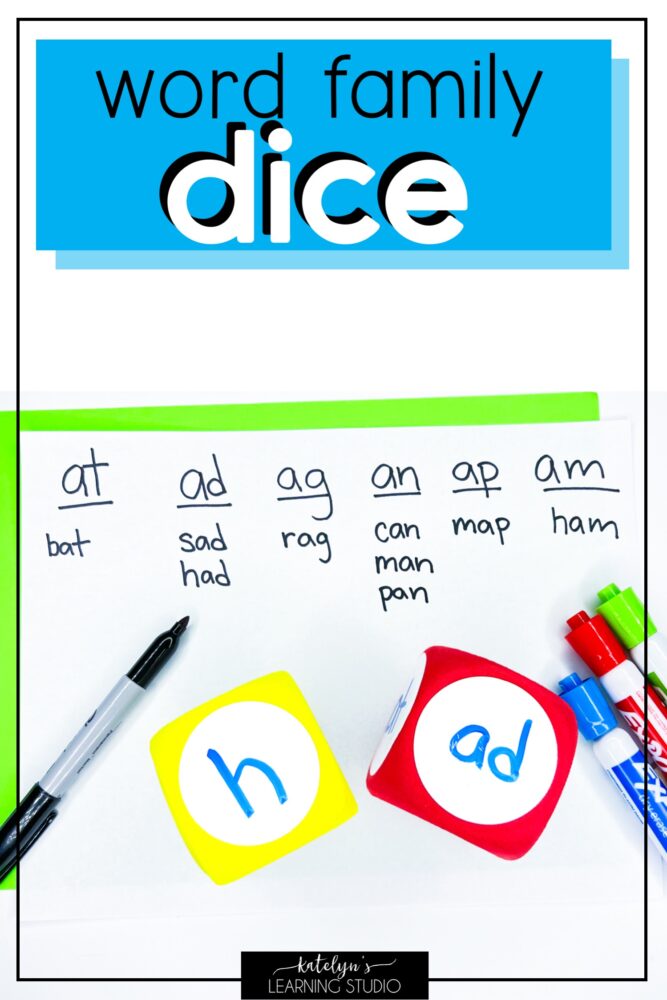
Word Families Activity #7: Dry Erase Dice
This is a super fun word family game to play with individual students or a small group. All you need is a pair of dry-erase dice (I got mine at the dollar store, but this set of dry erase dice from Amzon is high quality).
- Use one die as your onset (beginning sound) die and one as your rime (word ending) die.
- Use a dry erase marker to write a different beginning sound on each side of your onset die.
- Write a different word family ending on each side of your rime die.
- Let students take turns rolling both dice to make a word.
- Read the word, then write it on the board or on a piece of paper under the word family it belongs in.
- Keep rolling the dice to make new words, read them, and write them in the word family category they belong to.
- See which word family can “collect” the most words!
For more activity ideas, check out my Ultimate List of Reading Intervention Activities!
Teaching word families is one of the fastest ways for students to become more fluent in beginning reading. If you want to see your students read beginning level text more confidently and fluently, word families activities are what you want to use! These activities are a great way for you to get in the word family practice your students need while helping them have fun in an engaging and multisensory learning environment.
